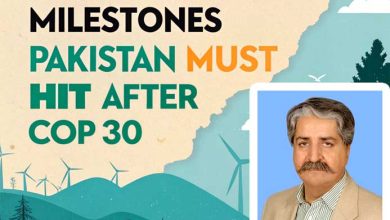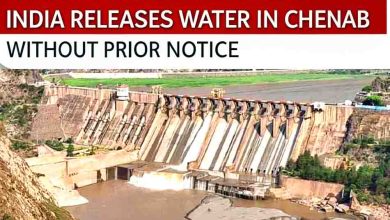Harnessing AI for Glacier Preservation: Pakistan’s Path to Climate Resilience
Pakistan must integrate AI in glacier monitoring, flood prediction, and carbon tracking while adopting regional cooperation and sustainable policies to combat climate change and mitigate glacier recession.
When it comes to the climate crisis, the world continues to live in oblivion, neglecting the impact of its reckless actions as long as they feed its hubris. 🌎🔥 Every year, world leaders gather at high-profile summits such as COP conferences to discuss the silent catastrophe unfolding, especially in the Global South, but no substantial action is taken.
The Growing Climate Crisis and Pakistan’s Glacier Risk
The over-reliance on fossil fuels has led to excessive greenhouse gas emissions, accelerating global warming. This has caused glacier melt at an alarming rate, forming glacial lakes that are prone to Glacial Lake Outburst Floods (GLOFs). These unpredictable floods release millions of cubic meters of water and debris, leading to widespread destruction.
Key Statistics:
- Pakistan has over 7,000 glaciers, the largest number outside the polar regions.
- The Hindu Kush Himalayan glaciers are retreating at an average rate of 14.9 meters per year. 📉
- Up to 80% of these glaciers could disappear by the end of the century if emissions remain unchecked.

The United Nations Development Programme (UNDP) and Green Climate Fund (GCF) have collaborated with Pakistan to tackle this crisis, but implementation remains weak.
How AI Can Help in Glacier Preservation
With Artificial Intelligence (AI) and IoT, tackling environmental challenges has become more feasible and efficient. Pakistan must integrate these cutting-edge technologies into its glacier preservation and water security strategies.
AI-Based Glacier Monitoring
AI-powered satellite imagery analysis and ground sensors can provide real-time data on:
- Glacier melt rates
- Snowpack thickness
- Ice volume changes
These insights can help predict and mitigate glacial recession before it leads to disasters.
AI-Powered Flood Prediction
Pakistan’s lack of infrastructure and communication has made flood warnings ineffective. AI-driven early warning systems can:
- Analyze weather data for more precise flood forecasting.
- Send SMS alerts and mobile app notifications to at-risk communities.
AI in Carbon Tracking and Emission Control
Pakistan’s heavy dependence on fossil fuels makes carbon emissions a key driver of glacier melt. AI-driven solutions can:
- Use satellites to track high-emission zones.
- Implement a Pigouvian tax on industries based on AI-monitored emissions.
- Optimize solar-powered irrigation systems to reduce fossil fuel dependency.
Pragmatic Measures for Pakistan’s Climate Resilience
To combat the accelerating glacier recession, Pakistan must implement actionable steps:
- Invest in AI-powered glacier monitoring systems.
- Adopt AI-driven flood prediction models.
- Develop AI-based early warning systems for communities.
- Collaborate with regional neighbors like China, India, and Afghanistan on water-sharing agreements.
- Implement black carbon reduction strategies by cutting emissions from industrial hubs and vehicles.
- Ensure international climate funds from Green Climate Fund are properly utilized.
The Role of Regional Cooperation in Climate Action
Glacier preservation is not a Pakistan-only issue; it affects South Asia as a whole. Countries must work together to:
- Establish regional water-sharing agreements.
- Launch joint AI-based climate monitoring programs.
- Create emission control policies across borders.
Conclusion: The Need for Immediate Action
Pakistan stands at a critical juncture in its fight against climate change. By harnessing AI-driven solutions, collaborating regionally, and optimizing climate funds, the nation can mitigate glacier loss and secure its future.
🌟 For more insights on sustainability and climate action, check out our related articles on climate resilience strategies and AI-driven environmental solutions.







